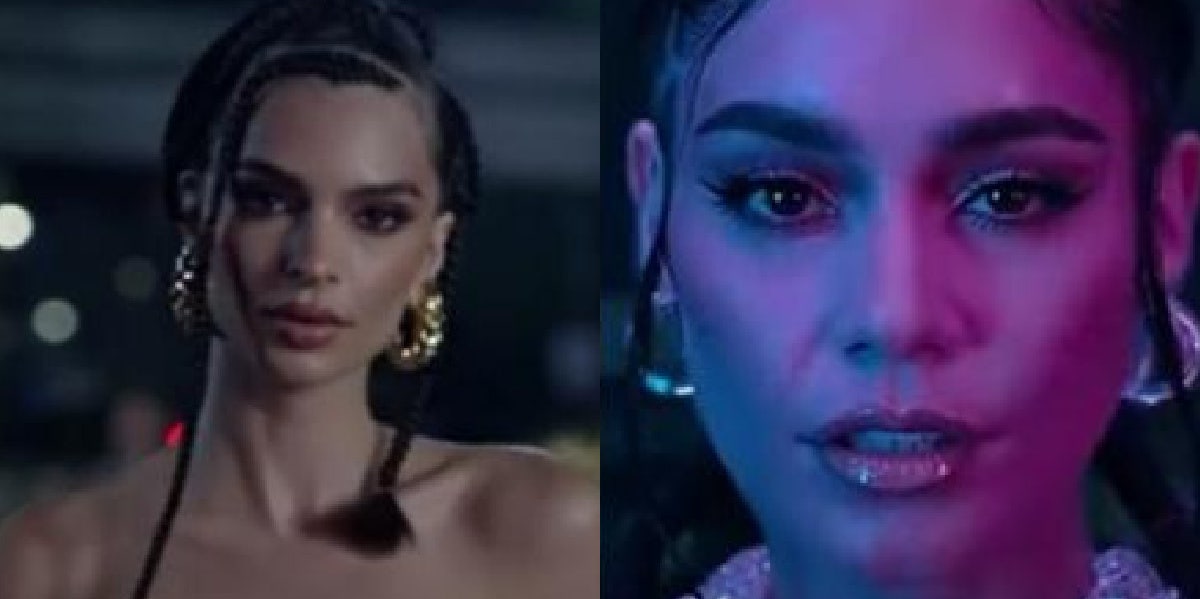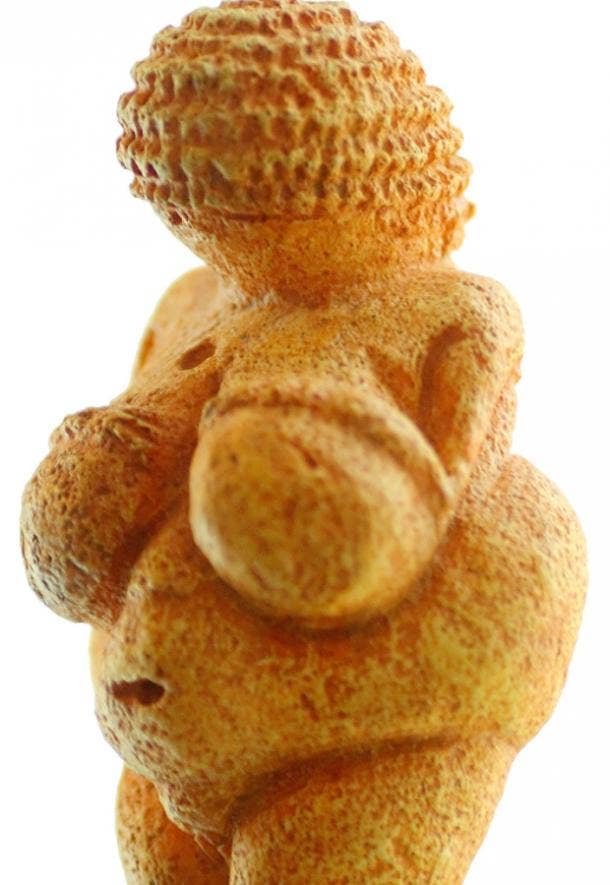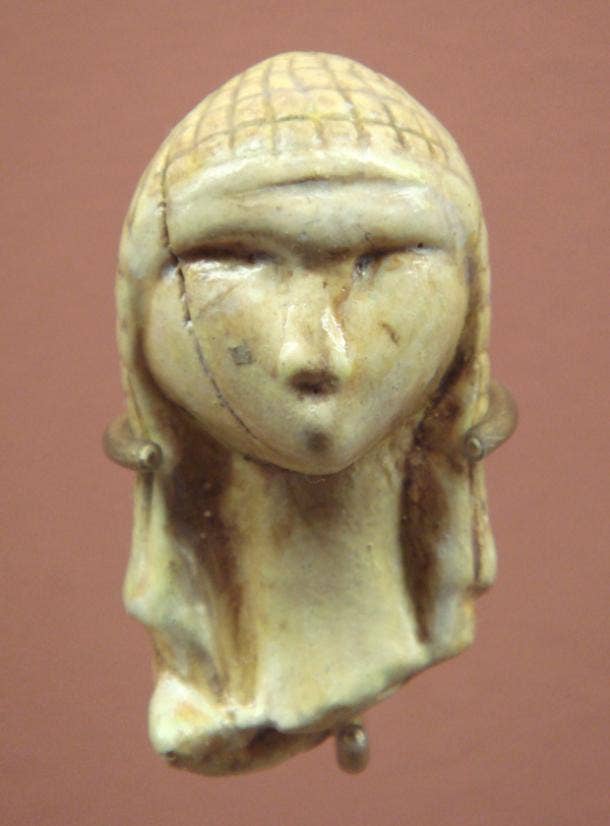
If you believe words, facts, and science matter, think again before condemning women with braids.
By Arianna Jeret — Written on Sep 29, 2021
Photo: YouTube

Another day, another angry critique of a celebrity doing something other people find offensive.
This week, the surprising-to-some target of blame for the modern-day American offense of cultural appropriation is none other than Rihanna, the very woman of color who just over a month ago was praised for becoming a billionaire courtesy of not only her stellar music career but her prowess as the entrepreneur behind her Fenty beauty and skincare line and her Savage X Fenty lingerie.
Now the revolving glass door of the social justice movement has spun back against beloved Riri, with many (on Twitter) outraged that she approved braided hairstyles worn by Vanessa Hudgens and Emily Ratajkowski — identified by critics on Twitter as "white girls" — on the runway of her Savage X Fenty fashion show.
I wish I could write something as funny as Rihanna putting all these white girls in braids for the fenty show
— raina (@quakerraina) September 24, 2021
I firmly believe everyone is entitled to their opinion, so if you don't like seeing anyone who isn't a Black woman wearing their hair in braids, that's cool.
But if language, facts and science matter as much as American progressives insist they do, let's be honest about the false and demeaning narrative this type of public outrage promotes.
Calling Vanessa Hudgens and Emily Ratajkowski "white girls" guilty of cultural appropriation is dismissive, reductive and demeaning.
To begin with, Hudgens is 32 years old. Emily Ratajkowski is 30.
Hudgens and Ratajkowski are women, not girls, and accomplished women at that.
For decades now, feminists have been combating casual references to women as girls. One study cited in Forbes last month found that women "who were referred to as girls felt less confident, perceived they had fewer leadership qualities and believed that others would view them as less prepared for leadership roles as well."
As they say, words matter.
RELATED: Cultural Appropriation Vs. Cultural Appreciation: How To Tell The Difference
The question of whether or not either Hudgens or Ratajkowski should be considered white is a complicated one.
Critical Race Theory (CRT) argues that race is not a result of biology but rather a social construct "created and maintained by dominant groups ... to justify their oppression and exploitation of other groups on the basis of the latter’s supposed inferiority, immorality, or incapacity for self-rule."
The dominant group in question here in the United States is further defined as "whites of western European descent."
SMH: Rihanna’s Savage X Fenty Fashion Show Sparks Controversy For Styling White Models In Braids https://t.co/VPOXAHKOGu pic.twitter.com/8JQPI0eKAI
— Bossip (@Bossip) September 29, 2021
If you also believe in the concept of intersectionality, however, CRT becomes murky at best, as most people living in the United States don't fit neatly into categories of racial, national and ethnic descent.
Vanessa Hudgens father was of Irish, French and Native American descent, and her mother is Filipina, a native of Manila, Philippines. Anyone looking at her heritage would be hard-pressed to explain why she should be so simply labeled a "white woman."
Ratajkowski is of English, Irish, Polish, German, and Polish Jewish descent, so it might be more easily tempting to fit her into the much reviled "white girl" category, but alas, even that wouldn't be accurate if you're willing to be scientifically honest.
The racial identity of Jews is hotly debated and for many reasons.
Part of the debate stems from the prevalence of antisemitism and the harsh reality that no group, minority or majority, really wants to claim Jews among their own.
Part of it stems from the complicated reality of being members of an ancient ethno-nationality who were expelled from their indigenous land (i.e., Israel) thousands of years ago, leading to centuries and centuries of blending bloodlines.
Part of it stems from the relative ease with which Jews coming to the US from Europe have been able to "pass" as white on many levels, providing them with a buffer of privilege not shared by other minorities and people of color.
And part of it has been a purposeful branding of Palestinians as "brown" and Jews as "white" in a narrative designed to promote antisemtitic, anti-Israel propaganda.
There are far more issues and complications at play when trying to answer the question of whether or not Jews are white than I could possibly summarize within the context of this article.
Which is all to say that as a Jewish woman, Emily Ratajkowski is not someone you can simply write off as "white" by looking at her skin tone.
The History of Braids in Native American and Jewish Culture
If you look at just one ethnicity each for both Hudgens and Ratajkowski, a quick Google search or two will show you easily enough that both women come from cultures with a long, long history of styling hair in braids.
As explained by Barbie Stensgar on Sister Sky, braids have long-held symbolism in Native American communities:
"At pow-wows, it is common to see family members and friends brushing and braiding hair for each other. It’s a beautiful way to bond and a powerful way to reinforce the sacredness of relationships. There is a teaching about the symbolism of the braid, itself, that reaffirms this practice. It is said that single strands of hair are weak when tugged on, however, when you pull all of the hair together in a braid the hair is strong. This reinforces the value of the family and tribe along with our connection to all of creation."
And in Jewish culture, braids can be traced as far back as 1200-1000 BCE.
In the Old Testament's Book of Judges, verse 16:13, Samson tells Delilah, "If you weave the seven braids of my head into the fabric on the loom and tighten it with the pin, I’ll become as weak as any other man."
And in 2007, archaeologists discovered "a full head of woman's hair, including two braids" in the ruins of Masada, the ancient desert fortress in Israel where Jewish rebels chose to die by mass suicide rather than be captured and enslaved by Romans in 73 A.D.
In fact, Rastafarian dreadlocks are symbolic of the Lion of Judah — a Jewish national and cultural symbol that was traditionally regarded as the symbol of the Israelite tribe of Judah — and were inspired by the Nazarites of the Bible, the same Israelite classification Samson fell under.
Hairstyles in all cultures throughout the world have included braids or dreadlocks at some point in history.
Braids go back so far in time and cross so many cultures that any attempt to classify this hairstyle as belonging to one culture or being appropriated by another is an exercise that does nothing but fuel anger and drive further wedges between people.
The truth — meaning not my opinion but the historical, scientific truth — is that the oldest known reproduction of hair braiding is the Venus of Willendorf, a female figurine estimated to have been made between about 28,000 and 25,000 BC (that's about 30,000 years ago) — in what is modern day Austria.
 Photo: MatthiasKabel, CC BY-SA 3.0, via Wikimedia Commons
Photo: MatthiasKabel, CC BY-SA 3.0, via Wikimedia Commons
Related Stories From YourTango:
Next up was the Venus of Brassempouy, an ivory figurine discovered in France in 1892 that is thought to be about 25,000 years old.
 Photo: National Archaeological Museum, Public domain, via Wikimedia Commons
Photo: National Archaeological Museum, Public domain, via Wikimedia Commons
Yes, braids can also be traced back nearly 5000 years to ancient stone paintings depicting cornrows found in North Africa that date back to 3500 B.C.
And yes, Black women have been horribly and unfairly discriminated against for centuries in the US, both in regard to their hairstyles and all other aspects of life.
That is inexcusable and I do understand why this is such a traumatic topic.
But are braids cultural appropriation and should Rihanna, Vanessa Hudgens and Emily Ratajkowski be made the subjects of so much emotional and mental space that could instead be focused on bringing about meaningful movement toward unity and social justice?
I'll let you be the judge, since judging is what most outraged people on Twitter seem truly interested in these days anyway.
But before you go criticizing this article by saying, "Imagine a white girl telling people what cultural appropriation is or isn't and who braids belong to," ask yourself why you're calling me a girl, why you think I'm white, what you know about my culture, and what you know about braids among cultures that are not your own.
The true answers, if you're being honest with yourself, will probably be hard to come by.
RELATED: No, Bruno Mars Is Not A Cultural Appropriator Just Because He's Inspired By Black Artists
Deputy Editor Arianna Jeret, MA/MSW, has been featured in Cosmopolitan, The Huffington Post, Yahoo Style, MSN, Fox News, Bustle, Parents and more. Find her on Twitter or Instagram for more.
